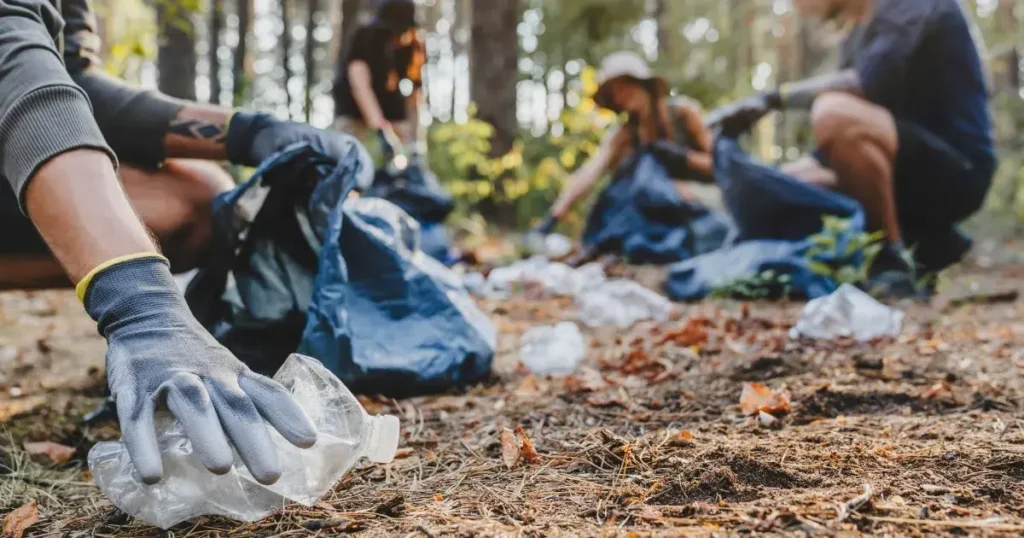
ESG in Supply Chains: The Business Case for Impact Sourcing and Diversity in 2025!
In 2025, corporate supply chains are no longer treated as distant extensions of business operations—they are central to a company’s ESG credibility, financial….

As businesses strive to enhance their environmental, social, and governance (ESG) performance, plastic credits have emerged as a key tool in tackling plastic pollution and supporting waste recovery initiatives. The global push for ESG reporting and sustainability commitments has encouraged companies to take responsibility for their plastic footprint while contributing to circular economy goals.
Plastic credits offer a market-driven solution to the global plastic crisis, allowing businesses to finance plastic waste recovery efforts and integrate sustainability into their corporate strategy. With plastic production expected to increase by 40% in the next decade, businesses must take proactive measures to prevent further plastic waste accumulation.
While carbon credits have been widely debated, plastic credits have gained traction due to their tangible impact—directly funding plastic waste collection, recycling, and reuse efforts. However, the concept is still relatively new, and many companies are still learning how to integrate plastic credits into their ESG strategy effectively.
This guide explores how plastic credits work, their benefits and challenges, and how businesses can leverage them to enhance their sustainability initiatives.
Plastic credits are tradable certificates that represent the removal or recycling of a specific amount of plastic waste from the environment. Each credit signifies that a verified quantity of plastic waste has been collected, processed, or repurposed, preventing it from entering landfills, oceans, and natural ecosystems.
By purchasing plastic credits, companies can compensate for their plastic usage by funding waste management initiatives, including:
Unlike carbon credits, which focus on emissions offsetting, plastic credits address plastic waste directly, making them easier to verify and track. Businesses that invest in plastic credits actively participate in reducing plastic pollution while improving their ESG performance.
Plastic credits operate on a systematic process that allows businesses to measure, finance, and offset their plastic footprint. The process typically involves:
Plastic pollution has reached crisis levels, with over 430 million tons of plastic produced annually, yet only 9% is recycled. Businesses must act to reduce their plastic footprint, and plastic credits offer an immediate and measurable solution.
Key Benefits of Plastic Credits
Like any sustainability initiative, plastic credits come with both advantages and challenges.
✅ Reduces Plastic Waste: Directly funds plastic recovery and recycling programs, removing waste from the environment.
✅ Supports Communities: Creates economic opportunities for coastal communities and waste pickers.
✅ Enhances ESG Compliance: Strengthens ESG reporting and attracts ESG-focused investment.
✅ Provides Tangible Impact: Unlike carbon credits, plastic credits offer measurable, visible environmental benefits.
❌ Risk of Greenwashing: Without transparency, some businesses may misuse plastic credits to falsely claim sustainability achievements.
❌ Lack of Global Standardization: No universally accepted certification system currently regulates plastic credits.
❌ Not a Long-Term Solution: While plastic credits help offset waste, businesses must also work toward reducing plastic production at the source.
As the plastic credit market grows, businesses must carefully select providers that ensure transparency, credibility, and real impact.
Key Factors to Consider:
While plastic credits play a critical role in addressing immediate plastic pollution, they should not replace corporate commitments to waste reduction. Instead, businesses should:
✔ Adopt Sustainable Packaging Solutions
✔ Invest in Plastic-Free Alternatives
✔ Improve Internal Waste Management Practices
✔ Engage in Extended Producer Responsibility (EPR) Programs
Plastic credits should be one component of a broader ESG strategy, alongside waste reduction, recycling innovation, and responsible production practices.
Plastic credits present a valuable opportunity for businesses to offset their plastic impact, support global waste recovery efforts, and enhance ESG performance. However, they must be implemented responsibly—with clear verification mechanisms, traceability, and integration into a long-term sustainability plan.
At IFRSLAB, we specialize in ESG consulting UAE, offering tailored ESG advisory services UAE to help businesses navigate the evolving sustainability landscape. Whether you need support with ESG reporting, plastic credit integration, or sustainability frameworks, our experts can guide you every step of the way.
Get in touch today to explore how plastic credits can support your ESG goals and sustainability commitments!
Plastic credits are tradable certificates representing the removal or recycling of a specific amount of plastic waste. They help businesses offset their plastic footprint by funding waste recovery projects.
Businesses calculate their plastic footprint, purchase plastic credits, and fund waste collection and recycling initiatives. Verified providers track and report the impact.
No. Carbon credits focus on offsetting greenhouse gas emissions, while plastic credits directly reduce plastic waste in the environment.
Plastic credits help reduce pollution, support waste management communities, and enhance ESG reporting—demonstrating corporate responsibility and sustainability leadership.
Any business using plastic in packaging, manufacturing, or logistics can leverage plastic credits to mitigate environmental impact and strengthen sustainability initiatives.
They provide measurable sustainability impact, ensuring compliance with ESG reporting requirements and attracting ESG-focused investment.
Plastic credits help offset waste but should be part of a broader sustainability strategy that includes waste reduction, alternative packaging, and circular economy initiatives.
Look for traceability, transparency, third-party verification, and clear impact reporting to ensure your investment leads to genuine environmental benefits.

In 2025, corporate supply chains are no longer treated as distant extensions of business operations—they are central to a company’s ESG credibility, financial….

As the climate crisis accelerates, businesses are learning that mitigation alone is no longer enough. For years, ESG strategies have focused largely on….

While environmental concerns—particularly climate change—have long dominated the ESG agenda, 2025 marks a turning point where the social and governance….

UAE : (+971) 52 710 0320 PAK : (+92) 300 2205746 UK : (+44) 786 501 4445
Office 2102 Al Saqr Business Tower 1, Sheikh Zayed Road
S-25, Sea Breeze Plaza Shahrah-e-Faisal, Karachi
Office#1304, 13th Floor, Al Hafeez Heights, Gulberg III
104 Broughton Lane Salford M6 6FL
P.O. Box 71, P.C. 100, Muscat


Lorem ipsum dolor sit amet, consectetur adipiscing elit. Ut elit tellus, luctus nec ullamcorper mattis, pulvinar dapibus leo. Lorem ipsum dolor sit amet, consectetur adipiscing elit. Ut elit tellus, luctus nec ullamcorper mattis, pulvinar dapibus leo.
Get Every News By Signing Up To Our Newsletter
Typically replies within a day